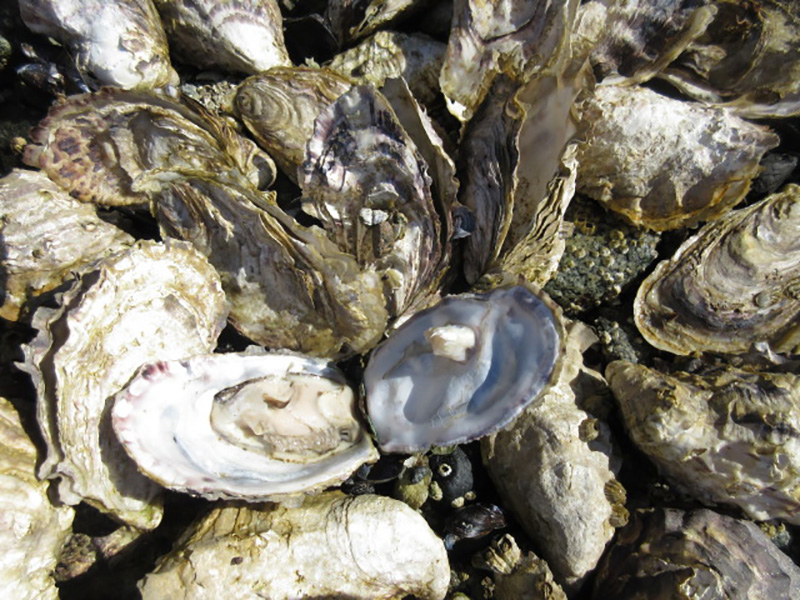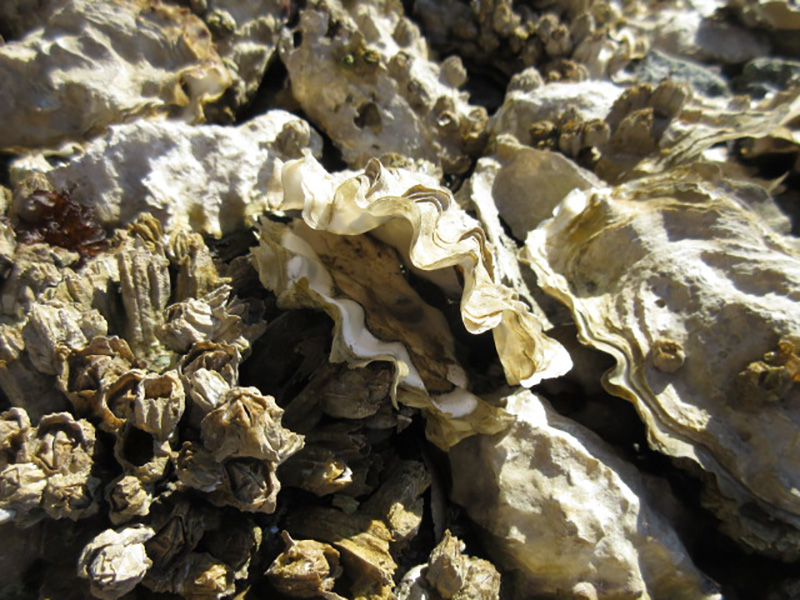Judy Hicks, a commercial shellfish grower in Okeover Inlet, B.C., started her day early on July 2. Weather forecasts had predicted that temperatures would reach the mid-20s that day — after hitting the mid-to-high 30s earlier that week — and Hicks wanted to avoid the heat.
Hicks had about 5,000 to 6,000 oysters growing over a half-acre of shoreline. As she made her way down to the rocky beachfront, she noticed a strange smell and assumed it was a dead animal. Then she noticed that many of the oyster shells had opened. The oysters inside were dead.
From June 25 to July 1, during B.C.’s unprecedented “heat dome” that caused hundreds of human fatalities; record-breaking temperatures are estimated to have killed more than one billion sea animals.
Temperatures rose to over 40 C in some areas of the province. The scorching heat, combined with low summer tides, had a deadly effect. Seashore animals that were killed included sea stars, barnacles, sea clowns and cockles, along with a range of shellfish species farmed by commercial growers, such as clams, blue mussels and oysters.
“I have been in this industry for 36 years, and I have never seen a mortality rate like this,” Hicks said. “I lost 60 per cent of the bigger oysters and 80 per cent of the smaller ones.”
For a small-scale grower like Hicks, this represents a loss of about $30,000.
Oysters are generally quite hardy, Hicks said, and don’t need extra care during the summer. So when the heat wave caused shoreline temperatures to spike during low tide, B.C.’s shellfish growers were caught unprepared.
Troy Hutchings, who also farms Pacific oysters in Okeover Inlet, had already suffered pandemic-related losses when temperatures began to rise.
On June 24, Hutchings and his business partner and wife Annette Lessard went for a swim. The tide was one of the lowest they had seen.
“We did notice a faint smell and some predator-like starfish and sea clowns dead around the oysters,” Hutchings said. “I knew something was wrong,”
The heat kept Hutchings away from the beach for the next few days. On July 3, when he returned, he discovered that about 80 per cent of his oysters had died.
Hutchings, who maintains an oyster farm of over 3.5 acres, estimates this will translate into a loss of up to $70,000.
Okeover Inlet, located on the northern Sunshine Coast, is where oyster cultivation originally began in the province, Hutchings told The Tyee. It remains one of the most popular spots for growing shellfish because of its proximity to Pender Harbour, which is home to good quality wild oyster seeds.
When they are purchased, oyster seeds vary in size from about one to three millimetres — smaller than an apple seed. The bigger the seed, the more expensive it is.
It takes three to four years for a typical oyster to reach 6.35 to 7.6 centimetres, which is the minimum size required for market.
“It will take at least three to four years to get my business back to where it was before,” Hutchings said.
“The oysters that are still alive are not a good fit for sale either,” he added. “The quality has been compromised and they will have a much shorter shelf life. We may lose our buyers if we sell this stock.”

In addition to leaving sea animals exposed to the elements, the recent heat wave exposed a gap in the economics of food production on the West Coast.
Land-based farmers are able to access programs such as production insurance to help weather crop loss.
“Production insurance offers insured growers relief for crop production loss and plant loss when they are damaged through naturally occurring perils, such as hail, spring frost, excessive rain, flood, fire, extreme heat and drought,” a spokesperson from B.C.’s Ministry of Agriculture, Food and Fisheries said via email.
Unfortunately, shellfish growers do not currently have access to any crop-loss safety nets.
Jim Russell, executive director of BC Shellfish Growers Association, has been looking into petitioning the provincial and federal governments for access to business management or disaster relief funds to support affected growers.
Though commercial shellfish growing falls under Fisheries and Oceans Canada, Russell says, the DFO doesn’t have a suite of programs similar to those offered by Agriculture Canada to mitigate crop losses. As a result, the association has reached out to the federal government’s Canadian Agricultural Partnership.
Russell said his industry is now working to have shellfish aquaculture made eligible for income stabilization programs under the program.
“We have approached the B.C. Ministry of Agriculture for support with this effort and also to see if some help might be provided to impacted shellfish farmers outside of the CAP program,” he added. “DFO has other kinds of industry development programs, but nothing similar to CAP.”
The Tyee sent questions about these issues to DFO, but had not received responses by publication time.
A spokesperson from the Agriculture Ministry said that staff worked closely with industry stakeholders, including seafood producers, during the heat wave.
“[We] are continuing our conversations with producers to assess the overall situation, as well as options for possible support to B.C. seafood producers,” the spokesperson added.
Lessard says she and Hutchings would welcome any help they can get.
“We have no idea what we can do to get out of this situation otherwise,” she said. “We have no income now, and we don’t know what to do.”
The couple isn’t alone. It’s estimated that shellfish stocks in Okeover Inlet were reduced by an average of 75 to 80 per cent during the heat wave. Other nearby areas such as Henry Bay and Mud Bay took a hit of 40 and 50 per cent respectively.
“This is not just affecting us, but also the processors, the buyers and the whole market,” Lessard said.
The shellfish deaths will also have a larger environmental impact, she added, as oysters are filter-feeders and clean the water. “We might see more algae and blooms very soon at the beach.”
As oyster farmers worry about the financial future of their businesses, they also need to clear lost oysters from the shoreline.
“It might take about a month to just clean up,” Hutchings said. “We have to check every oyster and discard the ones that are dead or not in good condition.”
While Lessard handles the administrative part of their business, Hutchings will be on the beach.
“I don’t have anyone else help me out here. I have to do all of this myself before I can even think about re-seeding,” he said.
The losses underscore just how vulnerable rising temperatures make the industry.
“I have been in shell fishing my whole life, and I still can’t think of a solution that could work or would have prevented the loss this year,” Hutchings said. “With climate change, something like this might happen again and I am not prepared for it.”
It’s devastating, Lessard added, to see the beach and the sea creatures in this condition.
“We are just hoping someone will hear us.” ![]()
Read more: Food, Environment

















Tyee Commenting Guidelines
Comments that violate guidelines risk being deleted, and violations may result in a temporary or permanent user ban. Maintain the spirit of good conversation to stay in the discussion.
*Please note The Tyee is not a forum for spreading misinformation about COVID-19, denying its existence or minimizing its risk to public health.
Do:
Do not: